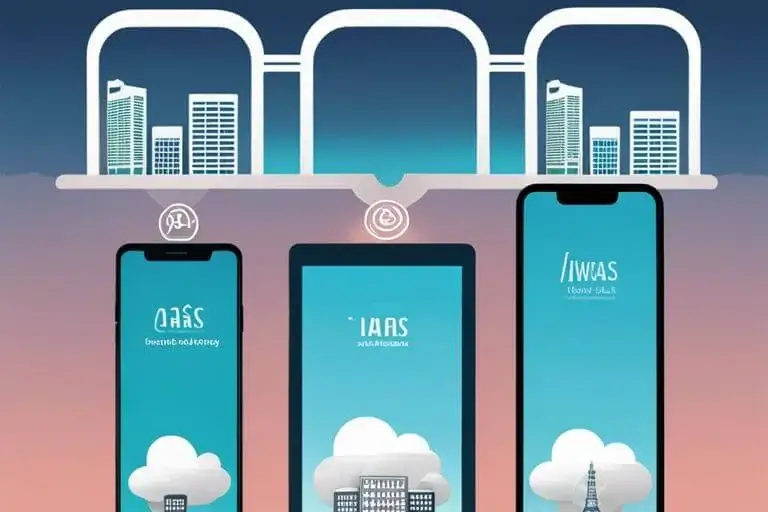Most businesses today rely on cloud computing for their IT infrastructure needs, but many are still unsure about the different models available. In this blog post, we will examine into the three primary cloud computing models – Infrastructure as a Service (IaaS), Platform as a Service (PaaS), and Software as a Service (SaaS) – to provide a clear understanding of how each one works and the unique benefits they offer. By demystifying these models, we aim to empower readers with the knowledge needed to make informed decisions when it comes to leveraging cloud technology for their organizations.
Understanding IaaS – Infrastructure as a Service
Core Characteristics of IaaS
Infrastructure as a Service (IaaS) is a cloud computing model that provides virtualized computing resources over the internet. This includes virtual servers, storage, networking, and other vital infrastructure components. With IaaS, users have the flexibility to scale resources up or down based on demand, paying only for what they use.
Advantages and Use Cases for IaaS
Any organization looking to reduce capital expenses and improve scalability should consider leveraging IaaS. By outsourcing the infrastructure management to the service provider, businesses can focus on their core competencies while benefiting from the provider’s expertise in maintaining and securing the underlying infrastructure. IaaS is ideal for startups and small businesses that need to rapidly deploy and scale their IT resources without investing in physical hardware.
With its pay-as-you-go pricing model, IaaS allows organizations to align their IT expenses with actual usage, offering cost savings and operational efficiency. Additionally, IaaS can help businesses handle temporary workloads, such as testing and development projects, without the need to invest in additional on-premises hardware.
Exploring PaaS – Platform as a Service
Defining PaaS and its Key Components
Clearly, Platform as a Service (PaaS) is a cloud computing model that provides a platform allowing customers to develop, run, and manage applications without the complexity of building and maintaining the infrastructure typically associated with developing and launching an app.
How PaaS Supports Development and Innovation
Supports development and innovation by offering a comprehensive set of tools and services that streamline the development process, facilitate collaboration among team members, and accelerate time-to-market for new applications. PaaS enables developers to focus more on coding and less on managing infrastructure, ultimately fostering creativity and innovation.
With features like scalable infrastructure, automated services, and built-in security measures, developers can easily deploy applications across various platforms, test new ideas quickly, and iterate on projects in real-time. By utilizing PaaS, businesses can adapt to changing market demands and stay ahead of the competition by continuously delivering innovative solutions.
SaaS – Software as a Service Demystified
SaaS – A User-Centric Cloud Computing Model
Many businesses are increasingly turning to Software as a Service (SaaS) as a cloud computing model for accessing and using software applications over the internet. SaaS offers a user-friendly experience where software is centrally hosted and maintained by the service provider, allowing users to access applications from any device with an internet connection.
Benefits and Considerations for SaaS Adoption
SaaS is a cost-effective solution for businesses as it eliminates the need for upfront hardware and software investments, reduces maintenance costs, and provides scalability based on business needs. However, businesses need to consider factors such as data security, integration with existing systems, and reliance on the service provider for updates and support when adopting SaaS solutions.
Service providers typically offer subscription-based pricing models for SaaS applications, allowing businesses to pay for the software on a per-user or per-month basis. This model ensures flexibility and cost control for businesses, as they can easily scale their usage up or down based on their requirements.

Comparisons and Interdependencies
| Criteria | IaaS |
| Service Level | Infrastructure |
| Flexibility | High |
| Control | User manages everything above the infrastructure layer |
| Examples | Amazon Web Services (AWS), Microsoft Azure |
Analyzing the Differences Between IaaS, PaaS, and SaaS
The key distinctions lie in the level of service provided. Infrastructure as a Service (IaaS) offers a bare, virtualized environment; Platform as a Service (PaaS) adds an application layer, while Software as a Service (SaaS) is a fully developed software ready for use.
Understanding the Interplay Among Cloud computing Models
Any proficient understanding of cloud computing models necessitates recognizing how IaaS, PaaS, and SaaS intersect. IaaS forms the foundation, PaaS builds upon it, and SaaS represents the pinnacle of the ‘as a Service’ stack with full application delivery.
Analyzing the interactions among these models reveals a layered approach to service provision, with each level fulfilling a specific role in delivering cloud services to users efficiently.
Final Words
As a reminder, understanding the differences between IaaS, PaaS, and SaaS is crucial for businesses looking to leverage cloud computing models effectively. By demystifying these cloud computing models, organizations can make informed decisions about which model best suits their needs. Whether it’s the flexibility of Infrastructure as a Service, the convenience of Platform as a Service, or the ready-to-use applications of Software as a Service, each model offers unique benefits for different business requirements. With this knowledge in hand, businesses can confidently navigate the complex world of cloud computing and harness its capabilities to drive innovation and growth. Embrace the cloud computing models that align with your business goals, and watch as your organization thrives in the digital era.